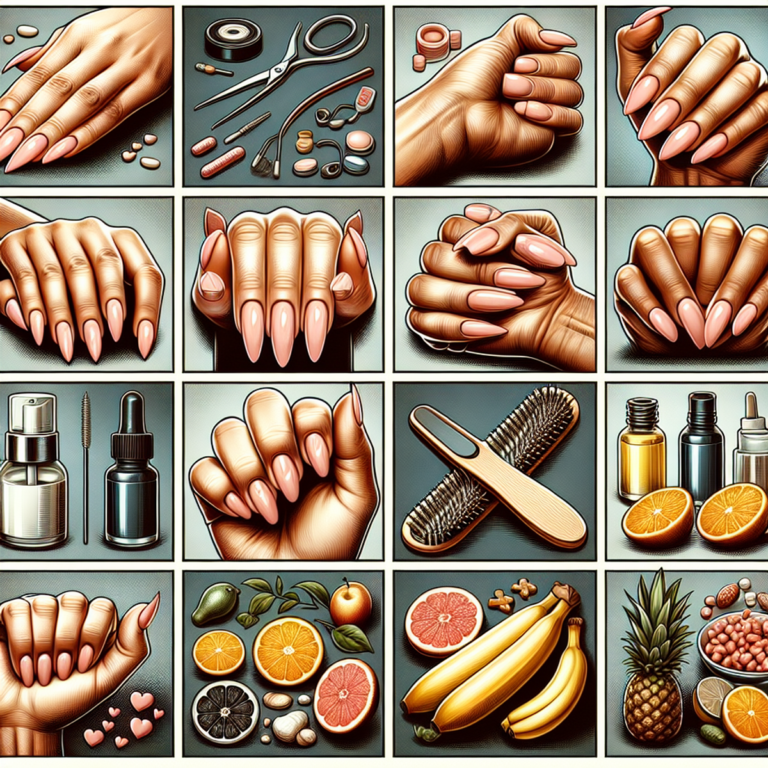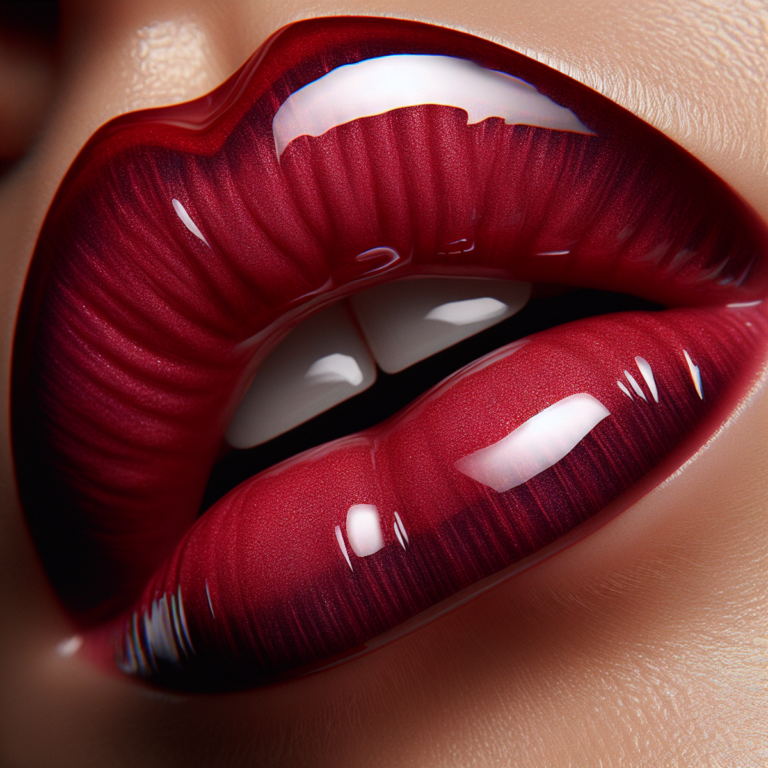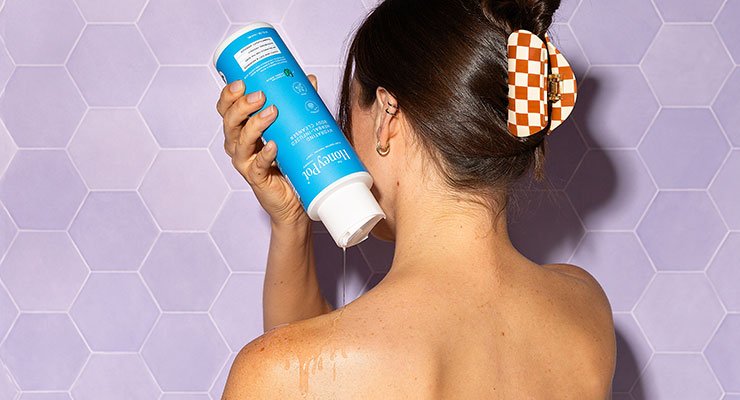Ways to get rid of acne scars for good

Introduction
Acne scars are the lasting reminders of past breakouts, often making the quest for clear and smooth skin feel like an uphill battle. These scars can appear in different forms, such as small indentations, larger depressions with blurry edges, or even raised thickened areas. Finding an effective solution for acne scars can be challenging because they come in various types and have different underlying causes.
In this article, we will explore different methods and solutions for treating acne scars, with the goal of finding a permanent solution. By understanding the details of each treatment option, you can take proactive steps towards saying goodbye to acne scars and embracing healthier skin.
Addressing acne scars is not just about physical well-being; it also plays a significant role in boosting self-confidence and restoring a positive self-image. As we discuss ways to get rid of acne scars, remember that each approach not only helps rejuvenate the skin but also contributes to feeling more empowered and self-assured.
Understanding Acne Scars
Acne scars are a common concern for many people, and understanding the different types of scars can help in finding the most effective treatment. Here, we will provide a comprehensive overview of the various types of acne scars and their characteristics.
Atrophic Scars:
- Appearance: Atrophic scars are small indentations in the skin that appear as depressions or pits.
- Types: Atrophic scars can be further categorized into three subtypes:
- Icepick Scars: These are deep, narrow scars with sharp edges that resemble puncture marks.
- Boxcar Scars: Boxcar scars have broad depressions with well-defined edges, giving them a box-like appearance.
- Rolling Scars: Rolling scars have a wave-like appearance due to tethering of the skin to underlying structures.
Hypertrophic and Keloid Scars:
- Appearance: Hypertrophic scars are raised and thickened, while keloid scars extend beyond the original wound site and can be larger and darker.
- Causes: Both hypertrophic and keloid scars are a result of excessive collagen production during the healing process.
Understanding the underlying causes of acne scar formation is crucial in determining the appropriate treatment approach:
- Inflammation: Inflammatory acne, such as papules, pustules, and cysts, can lead to scarring if not properly treated. The inflammation damages collagen fibers, causing an uneven texture in the skin.
- Collagen Damage: Severe acne can damage the collagen fibers responsible for maintaining smooth skin. When these fibers are disrupted or destroyed, it can result in depressed or atrophic scarring.
- Excessive Tissue Repair: Sometimes, the body’s natural response to repair damaged skin can be excessive, leading to raised or hypertrophic scars.
It is worth noting that individuals may have a combination of different types of acne scars on their skin. Therefore, a personalized treatment plan tailored to the specific scar types is essential for achieving optimal results.
By understanding the appearance and underlying causes of different acne scars, you can better navigate the available treatment options and choose those best suited to your needs. In the following sections, we will explore a range of medical and at-home treatments that can effectively address acne scars and help you achieve smoother, clearer skin.
Medical Treatments for Acne Scars
Acne scars can be frustrating to deal with, but there are several medical treatments and dermatological procedures available that can help improve their appearance. In this section, we will explore some of the most effective options for treating acne scars.
1. Chemical Peels
Chemical peels are a popular choice for acne scar removal because they can effectively exfoliate the top layers of the skin and stimulate the growth of new tissue. The process involves applying a chemical solution to the skin, which causes controlled damage to the outer layers. As the damaged skin peels off, it reveals smoother and more even-toned skin underneath.
There are different types of chemical peels available, ranging from superficial peels to medium and deep peels. The choice of peel depends on the severity of your acne scars and your skin type. Superficial peels are milder and work well for mild acne scars, while deeper peels may be necessary for more severe scarring.
- Superficial Peels: These peels typically use alpha hydroxy acids (AHAs) or beta hydroxy acids (BHAs) such as glycolic acid or salicylic acid. They are gentle and require little downtime.
- Medium Peels: Medium-depth peels use trichloroacetic acid (TCA) or a combination of TCA and other acids to penetrate deeper into the skin. They provide more significant results but require a longer recovery period.
- Deep Peels: Deep peels involve using stronger solutions, such as phenol, to treat deep acne scars. They offer dramatic improvement but also come with a longer recovery time.
It’s important to consult with a dermatologist to determine which type of chemical peel is best suited for your specific needs.
2. Corticosteroid Injections
Corticosteroid injections are another option for treating raised acne scars. These injections contain a corticosteroid medication that helps reduce inflammation and flatten the scar tissue. The injection is administered directly into the scar, and multiple treatments may be required for optimal results.
This method is particularly effective for hypertrophic scars and keloid scars, which are characterized by excessive fibrous tissue growth. Corticosteroid injections can help soften and flatten these types of scars, making them less noticeable over time.
3. Dermal Fillers
Dermal fillers, such as hyaluronic acid injections, are commonly used to improve the appearance of atrophic acne scars. Atrophic scars are characterized by depressions or indentations in the skin. Dermal fillers work by plumping up these depressed areas, creating a smoother skin texture.
Hyaluronic acid fillers are a popular choice because they are safe and provide immediate results. The filler is injected beneath the skin to lift the depressed scar and restore volume to the area. The effects of dermal fillers typically last several months to a year, depending on the product used.
4. Microneedling
Microneedling is a technique that involves using tiny needles to create controlled micro-injuries in the skin’s surface. This process stimulates
2. Corticosteroid Injections
Corticosteroid injections are a popular medical treatment for reducing the appearance of raised acne scars. These injections contain powerful anti-inflammatory medications that help to reduce inflammation and flatten the scar tissue.
How Do Corticosteroid Injections Work?
Corticosteroid injections work by suppressing immune responses and reducing inflammation in the skin. When injected into raised acne scars, they help to break down excess collagen and reduce redness and swelling. Over time, this can lead to a flattening of the scar and an improvement in its overall appearance.
What Types of Acne Scars Can Corticosteroid Injections Treat?
Corticosteroid injections are particularly effective for treating hypertrophic scars, which are characterized by excessive fibroblast activity and an overproduction of collagen. By reducing inflammation and collagen production, these injections can help to flatten and soften these types of scars.
It’s important to note that corticosteroid injections may not be suitable for all types of acne scars. They are most effective for raised scars, such as hypertrophic or keloid scars, rather than atrophic or depressed scars. Additionally, multiple sessions may be required for optimal results, depending on the severity of the scars.
How Are Corticosteroid Injections Administered?
Dermatologists typically administer corticosteroid injections in a clinical setting. The procedure involves cleansing the skin and then injecting small amounts of the medication directly into each raised scar. The injections are performed using a fine needle to minimize discomfort.
Potential Side Effects
While corticosteroid injections can be highly effective in reducing raised acne scars, they do have some potential side effects. These may include temporary skin discoloration at the injection site, thinning of the skin, and the rare risk of infection. It’s important to discuss these potential risks with your dermatologist before undergoing treatment.
In summary, corticosteroid injections are a valuable tool in the arsenal of dermatological procedures for reducing raised acne scars. By targeting inflammation and breaking down excess collagen, these injections can help to flatten and improve the appearance of hypertrophic scars. However, it’s important to consult with a dermatologist to determine if this treatment is suitable for your specific type of acne scars.
3. Dermal Fillers
Dermal fillers are a popular and effective medical treatment for reducing the appearance of atrophic acne scars. These dermatological procedures involve injecting filler substances, such as hyaluronic acid, into the depressed areas of the skin. The fillers plump up these areas, making the skin smoother and reducing the visibility of acne scars.
Benefits of Dermal Fillers for Acne Scars
- Provides immediate results: Unlike some treatments that take time to show improvements, dermal fillers give instant results by improving the appearance of depressed scars.
- Simple process: The procedure for getting dermal filler injections is straightforward. A dermatologist will assess your acne scars, clean the treatment area, and inject the filler into specific locations within the scarred area.
- Temporary solution: Dermal fillers are not permanent. The effects usually last between six months to two years as the body gradually breaks down and absorbs the filler material.
How Dermal Fillers Work for Acne Scars
Dermal fillers are most effective for treating atrophic acne scars, which are characterized by small indentations or depressions in the skin. These types of scars often occur due to a loss of collagen in the affected area. By injecting dermal fillers into these depressions, dermatologists can restore volume and create a smoother surface.
Types of Dermal Fillers for Acne Scars
There are different types of dermal fillers available, each with its own unique properties and benefits:
- Hyaluronic acid fillers: These fillers are commonly used for acne scar treatment because they are compatible with the skin and provide natural-looking results.
- Collagen or synthetic fillers: Depending on individual needs and preferences, dermatologists may also use other types of fillers.
Is Dermal Filler Right for You?
Dermal fillers offer a safe and effective solution for reducing the appearance of atrophic acne scars. However, it’s important to consult with a qualified dermatologist before undergoing any medical treatment. They can assess your specific situation and recommend the most suitable treatment options for your acne scars.
4. Microneedling: A Dermatological Procedure for Acne Scars
Microneedling is a dermatological procedure used to improve the appearance of acne scars by stimulating collagen production and enhancing skin healing. This process involves the use of a device containing fine needles that create micro-injuries in the skin, triggering the body’s natural wound healing process.
The microneedling technique facilitates the formation of new collagen and elastin, which are essential for maintaining skin’s elasticity and smoothness. As a result, the skin’s texture is improved, and acne scars gradually become less noticeable over time.
Variations of Microneedling Devices or Techniques
- Derma Rollers: These handheld devices consist of a rolling drum studded with fine needles. When rolled across the skin, they create tiny punctures that promote collagen production. Derma rollers are available for home use but can also be administered by dermatologists for more intensive treatment.
- Radiofrequency Microneedling: This advanced form of microneedling combines traditional microneedling with radiofrequency energy. The radiofrequency waves generate heat in the deeper layers of the skin, further enhancing collagen production and skin tightening.
Microneedling is a minimally invasive procedure that can be performed in a clinical setting. Multiple sessions are often required to achieve optimal results, as the improvement in acne scars becomes more apparent with each treatment.
This collagen induction therapy has gained popularity due to its effectiveness in addressing various types of acne scars, making it a valuable option for individuals seeking to achieve smoother and clearer skin through advanced medical treatments.
5. Laser Treatment for Acne Scars
Laser treatment is one of the most effective and advanced medical treatments for reducing acne scars. Dermatologists use various types of lasers to target the deeper layers of the skin and promote collagen remodeling, resulting in significant improvement in the appearance of acne scars. Here, we will explore different types of laser treatments and their specific benefits.
Ablative Lasers
Ablative lasers are known for their aggressive approach in treating acne scars. They work by removing the outer layer of damaged skin, allowing new skin to grow in its place. The two main types of ablative lasers used for acne scar removal are CO2 lasers and erbium lasers.
- CO2 Lasers: CO2 lasers deliver high-energy beams that vaporize the top layer of skin. This stimulates collagen production and helps reduce the appearance of acne scars. However, CO2 laser treatment typically requires more downtime compared to other laser treatments, as it involves a longer recovery period.
- Erbium Lasers: Erbium lasers are less aggressive than CO2 lasers but still provide effective results for acne scar treatment. These lasers remove the outer layers of skin with precision, minimizing damage to surrounding tissues. Erbium laser treatment usually has a shorter downtime and faster recovery compared to CO2 lasers.
Non-Ablative Lasers
Non-ablative lasers are gentler and less invasive than ablative lasers, making them suitable for individuals who prefer minimal downtime or have milder acne scars. These lasers work by stimulating collagen production without removing the top layer of skin.
- Fractional Laser Technology: Fractional laser resurfacing is a popular non-ablative laser treatment for acne scars. It uses fractional technology to create microscopic columns of thermal injury in the skin, triggering the body’s natural healing response and stimulating collagen remodeling. Fractional laser treatments typically require multiple sessions for optimal results.
When considering laser treatment for acne scars, it is essential to consult with a dermatologist who will determine the most suitable type of laser based on your specific skin condition and scar severity. They will also discuss the expected downtime and potential side effects associated with each treatment option.
It’s important to note that laser treatments for acne scars are typically performed in a clinical setting. The number of sessions required can vary depending on the individual and the severity of their scars. While laser treatment offers significant improvements, it is essential to have realistic expectations and understand that complete scar removal may not always be possible.
At-Home and Natural Remedies for Acne Scars
Although professional treatments are the most effective way to treat acne scars, there are also several things you can do at home to complement the process and improve the appearance of your scars. These natural remedies can help reduce the visibility of scars and promote skin healing.
1. Topical Treatments
- Retinoids: Over-the-counter retinol creams or prescription retinoids can help improve skin texture and reduce the appearance of acne scars over time.
- Salicylic Acid: This beta-hydroxy acid helps exfoliate the skin and can diminish the look of acne scars by promoting cell turnover.
2. Chemical Peels
- Alpha Hydroxy Acids (AHAs): These acids, such as glycolic acid and lactic acid, can be used in at-home chemical peels to help improve skin tone and texture.
- Lactic Acid Peels: Lactic acid is milder than other chemical peels, making it suitable for at-home use to reduce hyperpigmentation from acne scars.
3. Skin Care Products
- Vitamin C Serums: These serums contain antioxidants that can brighten the skin and improve the appearance of acne scars.
- Hydroquinone Creams: Over-the-counter hydroquinone creams may help lighten dark spots caused by acne scarring.
4. Sun Protection
- Sunscreen: Regular use of broad-spectrum sunscreen with a high SPF is crucial to prevent further darkening of acne scars due to sun exposure.
5. Microneedling Devices
- Derma Rollers: These handheld devices create controlled micro-injuries to the skin, stimulating collagen production and potentially improving the appearance of acne scars over time.
When using at-home remedies for acne scars, it’s important to remember:
- Be patient and consistent with the application of these treatments.
- They may not provide dramatic results as quickly as professional treatments.
- They can contribute to gradual improvements in skin texture and tone when used as part of a comprehensive skincare routine.
Not all at-home remedies are suitable for everyone, especially those with sensitive skin or certain skin conditions. Consulting with a dermatologist or skincare professional can help determine the most appropriate at-home treatments based on individual skin concerns and needs.
Preventing Acne Scars
When it comes to preventing acne scars, early intervention is key. By taking proactive measures, you can minimize the risk of developing permanent scars after experiencing acne breakouts. Here are some effective strategies for post-acne scar prevention:
- Gentle Skincare Practices
- Avoid picking or squeezing acne lesions, as this can increase inflammation and tissue damage, leading to a higher risk of scarring.
- Use non-comedogenic skincare products to prevent clogged pores and reduce the likelihood of new acne breakouts.
- Gently cleanse your skin twice a day using a mild, non-abrasive cleanser to remove excess oil, dirt, and impurities without causing irritation.
- Timely Treatment of Acne
- Seek professional dermatological treatment for persistent or severe acne to prevent deep inflammation and extensive tissue damage that can result in more pronounced scars.
- Follow your dermatologist’s recommendations for topical or oral acne medication to control breakouts and minimize the potential for scarring.
- Sun Protection
- Shield your skin from harmful UV rays by applying a broad-spectrum sunscreen with an SPF of 30 or higher daily.
- Wearing protective clothing, such as hats and sunglasses, can further safeguard your skin from sun exposure that may darken existing acne scars.
- Avoiding Harsh Scrubs
- Steer clear of abrasive exfoliants and harsh scrubs that can irritate the skin and exacerbate existing acne lesions, potentially leading to increased scarring.
By implementing these preventive measures and adopting a gentle approach to skincare, you can significantly reduce the likelihood of developing persistent acne scars. Remember that consistency in your skincare routine and seeking professional guidance when needed are crucial steps in preventing post-acne scarring.
The Road to Clearer Skin: Combining Treatments for Optimal Results
When it comes to effective ways to get rid of acne scars and achieving clear skin after acne, it’s essential to take a comprehensive approach in treating acne scars. Combining different methods under the guidance of a dermatologist can significantly improve the outcomes of scar treatment. By using various treatments, such as medical procedures and at-home remedies, individuals can target different aspects of their acne scars, leading to better results.
Importance of Patience and Consistency
Throughout the scar treatment process, it’s crucial to understand the importance of patience and consistency. Most scar treatments take time to show significant improvements, and you often need to apply or undergo sessions consistently for the best outcomes. This is particularly true when dealing with more severe forms like mild cystic acne, where a comprehensive treatment plan is even more critical.
Note: Encouraging readers to stay committed to their scar treatment plan and follow through with the recommended regimen can help them achieve clearer and smoother skin over time.
Maximizing Chances of Success
By combining treatments and adopting a patient, consistent approach, individuals can maximize their chances of effectively getting rid of acne scars and attaining the clear skin they desire.
When to Seek Professional Help for Acne Scars
If you have severe or persistent acne scars that are affecting your self-esteem and quality of life, it may be time to seek professional help from a dermatologist. While there are various at-home remedies and over-the-counter products available, a skincare professional can provide expert guidance and recommend the most suitable treatment options based on your individual condition.
Here are some key reasons why you should consider consulting with a dermatologist for your acne scars:
- Severity of Scarring: If you have deep or extensive scarring, especially in areas that are highly visible such as the face, seeking professional assistance is crucial. Dermatologists have the expertise to assess the severity of your scars and recommend appropriate medical treatments or procedures to effectively address them.
- Persistent Scars: If you’ve tried multiple at-home remedies without seeing significant improvements in your scars, it’s time to consult with a dermatologist. They can offer advanced treatments that may yield better results and help fade stubborn scars.
- Professional Evaluation: Dermatologists can accurately diagnose the type of acne scars you have, whether they are atrophic, icepick, boxcar, rolling, hypertrophic, or keloid scars (as described in this study). Understanding the specific type of scar is essential for determining the most suitable treatment approach.
- Tailored Treatment Plan: Every individual’s skin is unique, and what works for one person may not work for another. Dermatologists can create a personalized treatment plan tailored to your specific needs and skin condition. They can combine different modalities such as chemical peels, corticosteroid injections, dermal fillers, microneedling, or laser treatments to achieve optimal results.
- Minimizing Risks: While there are effective treatments available for acne scars, some procedures carry potential risks or side effects. By consulting with a dermatologist, you can ensure that the treatments you undergo are performed safely and with minimal risk of complications.
Remember, dermatologists have extensive knowledge and experience in treating acne scars. They can provide professional guidance, monitor your progress, and adjust the treatment plan as necessary to help you achieve smoother, clearer skin. If you feel your acne scars are significantly impacting your well-being, don’t hesitate to reach out and seek their expertise. Additionally, when exploring over-the-counter products such as acne scar creams and serums, it’s important to do thorough research to find those that are most effective for your specific condition.
Conclusion
- Empowering Message: Don’t let acne scars define your beauty. Effective solutions are available to achieve smoother skin. Take the first step towards scar-free confidence by exploring the various treatments discussed in the article and consulting with a dermatologist.
- Realistic Goal: While it may require time and effort, getting rid of acne scars for good is a realistic goal to pursue.
Remember, you have the power to take control of your skin and regain your confidence. Don’t hesitate to seek professional help and explore the treatment options that best suit your individual needs. With determination and the right approach, achieving smooth and clear skin is within reach.






![Check Out the Trendy Fashion of Coachella 2024 [PHOTOS] Check Out the Trendy Fashion of Coachella 2024 [PHOTOS]](https://beautynewsflash.com/wp-content/uploads/2024/04/1713155213_Check-Out-the-Trendy-Fashion-of-Coachella-2024-PHOTOS-768x520.jpg)



